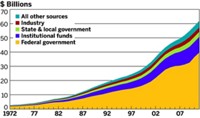Advertisement
Grab your lab coat. Let's get started
Welcome!
Welcome!
Create an account below to get 6 C&EN articles per month, receive newsletters and more - all free.
It seems this is your first time logging in online. Please enter the following information to continue.
As an ACS member you automatically get access to this site. All we need is few more details to create your reading experience.
Not you? Sign in with a different account.
Not you? Sign in with a different account.
ERROR 1
ERROR 1
ERROR 2
ERROR 2
ERROR 2
ERROR 2
ERROR 2
Password and Confirm password must match.
If you have an ACS member number, please enter it here so we can link this account to your membership. (optional)
ERROR 2
ACS values your privacy. By submitting your information, you are gaining access to C&EN and subscribing to our weekly newsletter. We use the information you provide to make your reading experience better, and we will never sell your data to third party members.
Education
A Professor's Worth
Academia: Report compares Texas A&M faculty members’ salaries and teaching revenues
by Elizabeth K. Wilson
September 20, 2010
| A version of this story appeared in
Volume 88, Issue 38

The Texas A&M University (TAMU) System has prepared a controversial report that details the revenue its faculty generate for the university. The report, which lists salaries, money brought in from teaching, and research grant funding, is a response to Texas taxpayers’ demands for greater accountability from the university. It has academics up in arms.
A column in the document subtracts each professor’s salary from the amount he or she brings in from teaching. However, this “difference” does not include research grants, which are listed in a separate column. How the resulting numbers would be used to affect or influence the careers of academics at the TAMU System remains murky.
“Our goal is not to grade our hard-working faculty but to provide the best analytical evaluation tools we can to maximize our mission and provide the highest quality education possible,” the university notes in a statement.
David H. Russell, head of the chemistry department at the university’s flagship College Station campus, is concerned that faculty could be pressured to focus on teaching, narrowly defined to emphasize classroom instruction, rather than the broader aspects of scholarship, which includes research. “This definitely could negatively impact the [reputation] of TAMU as a major research institution,” Russell tells C&EN.
For example, according to the document, 32 of 45 tenured and tenure-track chemistry faculty at the College Station campus brought in less money from teaching than was paid out for their salaries during the 2008–09 school year. However, during that same period, the department brought in more than $14 million in research grants. The amount the department generated from teaching after salaries are subtracted is a bit over $5 million.
William M. Gelbart, a chemistry professor at UCLA, says the amount of money professors bring in is only a small part of their actual worth. “It’s the wrong way to think,” he tells C&EN. “In the end, they should be judged by people who know the field, by their originality and productivity.”
The TAMU System is the seventh-largest in the U.S., consisting of 10 colleges throughout Texas, and enrolls nearly 115,000 students.





Join the conversation
Contact the reporter
Submit a Letter to the Editor for publication
Engage with us on Twitter